Senecio scaposus
| Botanical Name | Senecio scaposus |
|||||||||||
| Family | Asteraceae - The daisy family. |
|||||||||||
| Pronunciation | sen-ek-ee-o ska-POH-sus |
|||||||||||
| Common Name(s) |
English: Woolly senecio
Afrikaans: Klein-tontelbos
USA: Silver Spider ; Silver coral
|
|||||||||||
| Plant Group |
|
|||||||||||
| Plant Size |
|
|||||||||||
| Position |
|
|||||||||||
| General Information |
|
|||||||||||
| Specific Information | Senecio scaposus is a short stemmed succulent shrublet which branches from the base to form a cluster of heads, which may grow close to the ground or with short, upright, cylindrical stems. The plant spreads to a width and height of up to 30 cm. The cylindrical, inwardly curving leaves of 5-10 cm long, have pointed or blunt tips and grow in a tight rosette. In Senecio scaposus var. addoensis the tips are often spoon-shaped or lobed. The young leaves have a white to silvery felted coating which may be shed as they get older. This felted covering is an adaptation to the dry conditions under which the plant grows and serves to reflect the sunlight, preventing over-heating or burning. It is grown in Mediterranean-type gardens in Europe and California (USA) where frost is not severe. |
|||||||||||
| Ad Break | ||||||||||||
| Flowers | ||||||||||||
| Description | flower stalks are branched, 300 – 450 mm long, with 2 to 6 daisy-like yellow flowers up to 35 mm in diameter, on the end of thin stems |
|||||||||||
| Season |
|
|||||||||||
| Colour |
|
|||||||||||
| Growth Rate |
|
|||||||||||
| Plant Uses |
|
|||||||||||
| Distribution and Habitat | Senecio scaposus var. scaposus: from the Little Karoo in the Western Cape to the Kei River in the Eastern Cape, on ledges of sandstone cliffs, on steep slopes of rocky hills, and along dry river valleys in Albany Thicket and Eastern Valley Bushveld biomes, in sandy, mineral poor and acidic soil. Senecio scaposus var. addoensis: in the Eastern Cape, in the Addo Elephant National Park and near Port Elizabeth, in Albany Thicket where it is widespread in its habitat but, due to its restricted distribution, degradation of the veld and urban expansion, has been classified as Endangered. |
|||||||||||
| Planting Suggestions | Senecio scaposus prefers full sun or the light shade of woody sub-shrubs. When grown in overly shady conditions, the leaves become elongated and greener. Plant in well drained soil, preferably on a sunny slope or in a rockery. Water sparingly and allow the soil to dry between waterings. Keep dry as possible in winter, watering only to prevent the leaves from withering. In very well drained soil the plant can tolerate winter rains. It is reportedly hardy to -7°C, but at this low a temperature I am sure the plant would need the protection of overhanging vegetation. Senecio scaposus is best propagated from stem cuttings which can be taken at any time of the year, with spring or summer being preferable. Allow the stem cuttings to dry out well for about two weeks before planting in well-drained sandy soil. Rooting should take place in 4 - 6 weeks, after which they can be planted out in the garden. Feed plants cautiously with an organic fertiliser if required - over feeding may result in weak, lanky growth. |
|||||||||||
| Lorraine's Garden Notes | It was intriguing to note that the buds on my plant began to develop at the beginning of November (2014) and the first flower opened in mid-January (2015) - a time period of 9 - 10 weeks! References: Dave's Garden: Senecio scaposus Red List of South African plants: Senecio scaposus var. addoensis Red List of South African Plants: Senecio scaposus var. scaposus |
|||||||||||
| Medicinal Uses | Not used medicinally. |
|||||||||||
| Ad Break | ||||||||||||


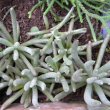
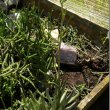
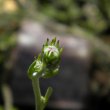
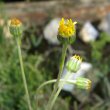
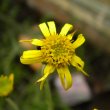

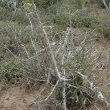



Discuss this plant
Share knowledge, ask a question or give an experience.